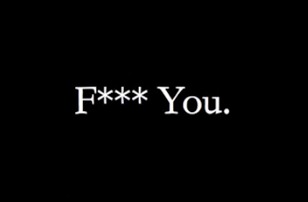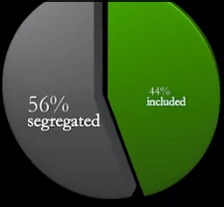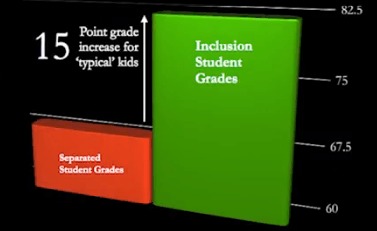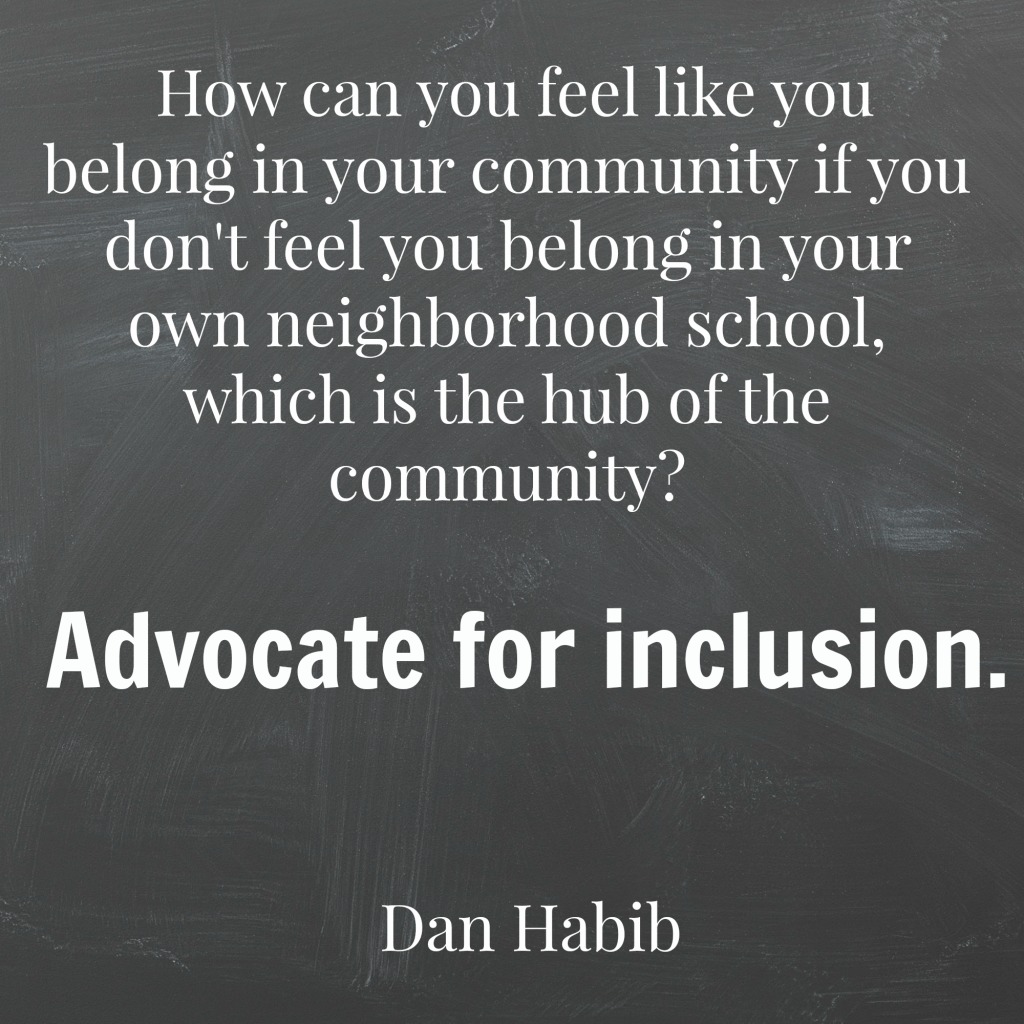Dan Habib’s Tedx Talk on the importance of inclusion, belonging and disabling segregation. Habib is the creator of the award winning documentaries, Including Samuel, Who Cares About Kelsey, Restraint and Seclusion: Hear Our Stories, Thalia and other disability related subjects .
Check out Dan’s Tedx Talk on the benefits of inclusive education for students with and without disabilities.
Picture yourself back in your grade school classroom. I don’t care if it’s elementary school, middle school, high school. Just put yourself back there for a second. Look around the classroom. Do you see any kids with and without disabilities studying together and learning together? Raise your hand if you do see that. One or two…couple of people in a room of about a hundred. Okay. Did you have a best friend who had a disability? A significant disability. A few people. Okay. Did you have a boyfriend or a girlfriend that had a significant disability? One person. Two people. Okay…out of a room of a hundred. Alright, let’s be honest for a second. Did you feel some fear or nervousness, when you were a kid, about talking to a kid with a disability? Raise your hand if you felt some fear or nervousness. Okay. Probably the majority of the room. We have something in common. I felt exactly the same way.
That’s me at four. I was in preschool and I became friends with a boy named Richard. And there was something different about Richard. Richard had a headband on all the time. And it was a little strange to me that this kid always wore this headband and I started wondering, “What’s under the headband?” ‘Cause Richard was different because he had this headband. And I learned that Richard had a lot of surgeries and I always wondered, “What did those ears look like under that head band?” And it was kind of scary to me to think about how different Richard was. As I got older…went to college…disability, honestly, was just a blip on the radar screen for me. It was not a big part of my life. I met my wife…we had our first son, Isaiah. Isaiah’s one of these kids that, at 10 months, he was walking…he was talking…he was always ahead of the curve. And then Samuel came along. He’s cute, isn’t he? I’m biased. I think he’s very cute. I was thrilled. We had another boy. My wife, Betsy, and I were like, “We know how to do boys! This is great! We can do boys!” And I started envisioning all the things that they would do together like I did with my brother. Playing baseball. Wrestling. Going hiking as a family with my sister and my parents. And I just started…it was wonderful to kind of envision this in my mind…until we noticed a few things. And one of the first things we noticed were his hands. And if you look closely at the picture, you see his hands are balled up in a fist. That’s not really typical. So we went to Samuel’s pediatrician and we said, “Listen. We’re seeing some things that are different with Samuel. Can we…what should we do?” And he said, “Listen…you know, kids develop in different ways. Don’t worry about it. Let’s just play it by ear. But just to be sure, let’s go see a neurologist to make sure there’s nothing wrong.” Okay…we get a little nervous about that step. We see the neurologist…he does lots of blood samples…skin samples. And a few weeks later, I get a phone call and the neurologist says, “Mr. Habib, I think your son has a mitochondrial disorder. Let’s get together in a few weeks and talk about it.” So I did what no parent should do but every parent would do. Want to guess? Google “mitochondrial disorder!” Of course! And the first thing that came up was “usually fatal.” And I felt like I was kicked in the stomach. And I remember thinking, “What does this mean? What is this going to mean for our life?”Now thankfully, I now know there are thousands of mitochondrial disorders that have lots of different ramifications. But in Samuel’s case, it did cause cerebral palsy. So suddenly we were on this journey that we never, ever expected to be on. So every night my wife and I would be together at the dinner table and we would be talking to each other: “What did Samuel do today? Did he roll over at all? Was he sitting up? Was he trying…was he talking at all?” You know, just trying to see…is there some sign that he’s getting better? I remember our physical therapist telling me, “If you…maybe if you massage him each night, it might loosen up his muscles.” So I would do those massages and on the nights when I forgot to do that massage, I would beat myself up. I would feel so guilty that I wasn’t doing what I needed to do to fix him. We started wondering, “What’s his life going to be like in school…in the community…relationships…work…college? You know, how can he go to college when he can’t even hold a pencil? How can he play with his friends when he can’t just run outside?” It was completely overwhelming.
Over time, we finally came to terms with the fact that Samuel had a disability and he would have a disability—a lifelong disability. So what do we do now? And what we realized we had to do was create a vision for Samuel and let him create a vision for himself. So what would that vision be?
The vision that became obvious to us was that we needed to make sure that he felt like he
belonged. That he belonged in our neighborhood…that he belonged in our community …and perhaps more than anything, that he belonged in his local school. Because how can you feel like you belong in your community if you don’t feel you belong in your own neighborhood school, which is the hub of the community? So that got us thinking about inclusion because for him to go to his local school would mean they would have to work to include him. Now luckily, Samuel’s a charmer. So…and a bit of a flirt. So in preschool, that wasn’t that difficult, right? He was completely included in preschool. He belonged. No doubt.
In elementary school, he was fully included in general education classrooms. He was
supported…sometimes, quite literally, by an expanding circle of friends. He belonged in that general education classroom. There was no doubt. He joined the scouts. He acted in school theater. When other kids were speaking their lines, Samuel used the communication device mounted on his wheelchair to speak his lines. And that was normal. That’s what he’d been doing all day long with his peers in school. For him, that stage was a place where he belonged.
Samuel is a big baseball fan and he started playing baseball with T-ball right up through coach-pitch league, and he loved it, and we loved watching the joy in his face. And then came the age where he was gonna be in the league where kids are pitching the ball quite fast…where kids are actually hitting the ball over the fence at times. And he wanted to play. So I thought, “Oh my gosh. How is he gonna play at this level?” And I remember getting together with the league president and saying, “Joe, listen. Samuel wants to play in this level. I don’t really know what that’s gonna look like. You know, should we send a letter home to families? Should we make this statement about inclusion? Should we have some communication throughout the league?”And he said, “Dan, slow down. Listen. If a kid in our community wants to play baseball, he’s gonna play baseball. End of story.” I just said, “Wow.” That’s all I could ask for. So he played. Oh, yeah, he played. He would get up there…he’d hit the ball off the Tee when the other kids were playing…hitting off a pitch. He would go like a bat outta hell down that first baseline on his bicycle with a little help from a coach. If he was out, he was out. If he was safe, he was safe. He was playing baseball. He belonged on that field.
Now in middle school, Samuel has a great circle of friends in eighth grade. He’s in general education in all his classes and he’s on the honor roll. Now if you’re surprised by that…that he’s on the honor roll…don’t be. Because Samuel represents the statistics that we have built over 35 years around inclusive education. The statistics have shown that kids with disabilities who are included in general education classrooms have better outcomes socially, academically, in terms of behavior, in terms of post-school outcomes, in terms of everything you can imagine.
Advocate for inclusive education in your communities and schools. Advocate for inclusive education.
It’s also important to look at the flip side of this…of a different story. And this is the story about a boy named Todd. Todd was a kid that I got to know early in my years as a photojournalist when I did a documentary story on mainstreaming kids with disabilities into general ed. It was almost like an experiment back then. “Let’s just try this and see how it works.” Well, Todd flourished in elementary school. He was with his peers. They got to know him. The problem was, as he got older, adults particularly…even in middle school and high school…kept talking to him like he was a four-year-old or a five-year-old because he had cerebral palsy and couldn’t speak and couldn’t walk. At times, his mother told me they would just pat him on the head as a teenager. They would make promises about things they were gonna do that went unfulfilled. Todd went through high school that way…pretty much being treated like a little kid. Finally at about age 20, he got access to some communication technology that allowed him to express his thoughts and feelings. You know what one of the first things he said was?

He said it a little more colorfully than that. And I…it’s funny, but it’s very sad that all this anger had been built up over these years because Todd had been treated like a little kid when he was absorbing everything. He was understanding everything. But he was never…he didn’t have that chance to be…for a bar to be held high for him. Unfortunately, Todd is also representative of statistics.

56 percent of kids in this country with intellectual and developmental disabilities spend their entire day in self-contained, separate settings just for kids with disabilities…whether it’s classes or separate schools. Even though we know…and all the research says…that that is not going to yield better outcomes for them.
Advocate for inclusion. Advocate for inclusive education.
Why do we do it? Well, we know that sometimes when you do things for a long time in society, it’s hard to change. Right? You just get into certain habits that this must be the way to do it. But I think about this all the time. What’s it gonna take to change that dynamic so that so many kids are not being segregated?
And I’ve come to believe that maybe it’s really not about Samuel. Or Todd. Maybe it’s not primarily about them. Maybe it’s actually about the other kids. Maybe we need to show that inclusion benefits typical kids without disabilities as much or more than they benefit Samuel or Todd.

And there’s one particular study that was done at Vanderbilt where they did two groups of kids they studied. One group were in an inclusive environment alongside their peers with disabilities; one group was separated from their peers with disabilities. The group that worked alongside their peers with disabilities had an average of a 15 point increase in their academic achievement.
And what they did is they figured…they figured out why that happened and it was because when you’re working collaboratively with a peer…with a friend…with somebody who might need a little extra assistance or some coaching…you’re much more engaged in the curriculum. You want to understand it. You want to study it. So those kids were so engaged ’cause they had this friend that they wanted to make sure that they were a good collaborator with. So they achieved at a higher rate.
So…but let’s look beyond academics. Academics are important…very important. But some of my favorite moments in Samuel’s life and in my life were the walks to school each morning.’Cause that’s where you get little glimpses of the conversations that happen among kids, right? Or you see those little rituals that go on or the games that are played or those little stories from home. Honestly, when I think back to school, I think I remember the walks to school more than I remember school itself. So, you know, that’s obviously critical—those extra parts of life that go beyond the classroom. So let me ask you another question. When you think about who you are today as a person…and I don’t mean just professionally; I mean your hobbies, your passions, your relationships, everything. Which of these two factors had a bigger impact on your life? Was it the academic experience of school or was it the social and emotional experience of school? So we’ll do a quick poll. How many of you say the academic experience of school had a bigger impact on who you are today? There’s no wrong answer, I swear. Okay…one…two…okay. We got three or four people. How many of you say the social and emotional experience of school had a greater impact? About 95 percent of the room. But we measure schools almost primarily…almost solely…by how they do academically by kids. When all of you have just told me that the social and emotional experience of school was, for most of you, more important.
So I’ll give you a real-time illustration of this point. Samuel and two of his friends—Jacob and Fletcher—and I took a great road trip to the Hall of Fame in Cooperstown, New York this summer. There’s Jacob…there’s Samuel as a 13-year-old with his buddies. We had a great trip. The Hall of Fame was awesome…wonderfully wheelchair-friendly…loved seeing all the memorabilia. And then it was time to go out for lunch in Cooperstown and the problem was, we couldn’t get into any of the stores or restaurants. As you see in the picture, almost every store had a step of three inches or six inches. Well, for Samuel, that’s like a brick wall to get his wheelchair over a step like that. The kids were furious. It had honestly kind of put a damper on our trip even though, overall, it was a great trip. So they came home and what did they do? They wrote a letter. They wrote a letter to the Chamber of Commerce; they wrote a letter to every newspaper in the area; and they said, “We are mad because almost all the stores in Cooperstown are not accessible to someone in a wheelchair. We had a hundred dollars to spend on souvenirs, and we made a pledge among the three of us that we were not going to go into a store that Samuel couldn’t get into. And we really hope that this letter helps to change downtown Cooperstown so that other people don’t have to go through what we went through.” That letter was published…we got a call from the Chamber of Commerce asking for our ideas and input. I said, “You’ve gotta have people in your own community who can think about this. You don’t need someone in Concord, New Hampshire.” But they were motivated. They were motivated.
So I continue to think though maybe it’s not just about Samuel. Maybe it’s not just bout his peers. Maybe it’s not even about you. Maybe it’s about your son…your niece…your nephew…your grandchild. What kind of world do you want them to grow up in? When they have…let’s say…a grandparent that develops Alzheimer’s or has a stroke and suddenly starts moving in a very different way or talking in a 15:11 different way, do you want them to think that’s weird and freaky and that they are scared of that? When they have a cousin that’s born with Down Syndrome or autism, do you want them to feel scared and distant and uncertain how to approach that cousin? Or do you want them to know that this is a natural part of life? What kind of world do you want them to grow up in? Who do you want them to be? Who do they want to become?
Advocate for inclusion.
What I’ve come to understand is you can’t teach this. You can’t teach this. You have to live it. You have to experience it. You can’t do a lecture on it, even though I’m trying my best. You have to experience it and you have to be there all the time, every day, around you, in community and schools alongside people of this type of diversity. This is life. This is part of our world. It has to be seen as a normal part of our world. Now I’ve also come to understand that it takes generational change. I mean, don’t forget that not long ago, people were smoking on airplanes, right? We were not wearing seatbelts in the way back…especially in the way back. We were legally segregating blacks and whites in school. FDR had to hide his wheelchair in public photographs because it was seen as a sign of weakness. But generations have come where these things are not seen as a given anymore. This is generational change.
So I think back to another story that I heard from Ms. O’Brien, Samuel’s teacher in elementary school. And she told me that one day there was a family that was resettled from a war-torn area of Africa…Burundi. And this family came to central New Hampshire…came to Concord…knowing nothing about the American culture, language, anything. And literally they came and because they had been building fires on the floor of the refugee camp the week before to cook their dinner, they built a fire on the floor of their apartment to cook their dinner. But this little girl came into her classroom and she knew nothing and the kids said, “Let me show you how to use the cafeteria and get your food. Let me show you what to do on a fire drill. Let me show you around the classroom. Let me help you understand what to do on a field trip.” They were incredible with her. They were patient. They were compassionate. They were creative. They were loving. And then Ms. O’Brien said to me, “That’s what they learned from Samuel and that’s what I’ve learned from Samuel.”
Thank you.







For incluson to work, teachers who know how to work with atypical kids need the training and aides to work with them. Many school districts don’t include ids becasue one teacher with 25 kids in a classroon can’t do it all alone. He/She needs help. Principals don’t understand atypical kids either, and threfore don’t know what to look for in hiring competent people.
Thanks so much. We are working for the same goals.
inclusion still has its flaws, sure these kids have ”friends;” in school, but very rarely do these ” friends” extend past school…. but yet many times the disabled community tend to make more strong lastign friendships with eachother… we need both ! we dont need to be shut away and restricted, but at the same time we need our peers whoare disabled and non disabled friends and peers….but also inclusion has also seen to be largley not helpful, many times ” the least restrictive enviornment” canbe the most restrictive, each individual child AND ADULT needs to be handled differently
The message is clear that kids who are mainstreamed have better outcomes. My son was born with autism and he was always in a mainstream classroom. He recovered and now works at a major aerospace company as an engineer.It took a long time but with medical, behavioral, educational interventions he made it.
“Without HOPE there is no hope! Don’t believe all you are told about autism. You can check out the first four chapters of “I KNOW YOU”RE IN THERE — winning our war against autism. Click on link below and read the “Look Inside” feature on amazon
.http://www.amazon.com/gp/product/0996103902
Very well written. Thanks
This could be even more awesome if our faith communities/churches were more inclusive.
[…] with disabilities are held to high expectations and have access to the general curriculum in the regular classroom, they excel. We must be honest about student performance, so that we can give all students the […]
Awesome!